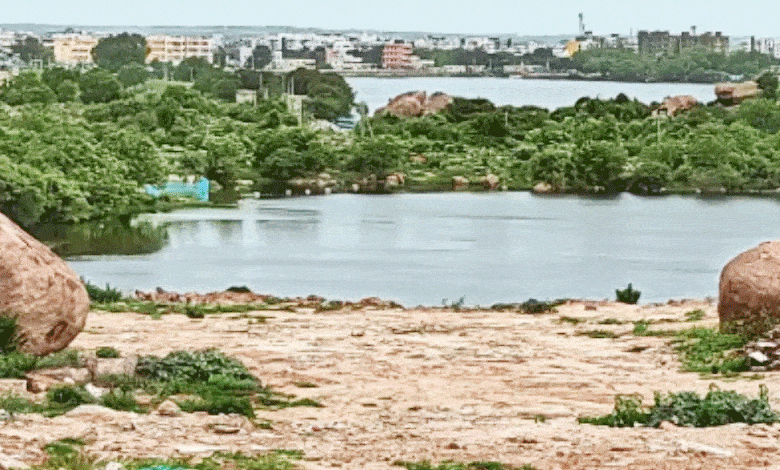HYDRA Shocking Report: Majority of Hyderabad’s Lakes Have Vanished
Officials emphasize the need for a unified and well-defined policy to resolve these issues. Immediate steps to protect existing lakes and revive lost water bodies are critical to addressing the crisis.

Hyderabad: A shocking revelation by HYDRA (Hyderabad Disaster Response and Asset Monitoring and Protection Agency) has highlighted that 61% of Hyderabad’s lakes have disappeared, while identifying and safeguarding the remaining 39% has become increasingly challenging. HYDRA, tasked with the protection of water bodies under the jurisdiction of the Hyderabad Metropolitan Development Authority (HMDA), is grappling with mounting complaints about lake encroachments and degradation.
Table of Contents
Also Read: “Taped Banana Sells for ₹52 Crore: Buyer’s Shocking Move Stuns Art World”
Alarming Complaints About Disappearing Lakes
Hydra has received over 4,000 complaints related to lakes, ponds, and drainage encroachments. Many of these involve lakes that have vanished or areas where Full Tank Levels (FTLs) and buffer zones have been illegally occupied. Despite being recorded in official documents, several lakes are nonexistent on the ground.
For instance, Ameenpur Lake, a prominent water body, shows conflicting data across various government records:
- 1949 cadastral map: 96.8 acres
- Historical records: 93.37 acres
- 2005 Survey of India topo sheet: 132.97 acres
- 2001 water spread area: 103 acres
- HMDA and Irrigation Department survey: 464 acres
This inconsistency is not limited to Ameenpur Lake; similar discrepancies are evident in major lakes within the Outer Ring Road (ORR) limits.
Challenges in Determining Boundaries
HYDRA is facing significant challenges in delineating the boundaries of lakes and their buffer zones due to a lack of coordination among key departments like HMDA, Irrigation, Revenue, and the Municipal Corporation. Each department maintains conflicting records, leading to prolonged disputes.
HYDRA’s recent meetings with retired engineers and experts have highlighted that the boundaries and shapes of lakes have been altered due to landfills and waste dumping, further complicating the identification of FTLs. These changes not only reduce the water-holding capacity of lakes but also make legal proceedings more complex.
Efforts to Safeguard and Restore Lakes
HYDRA has launched surveys to assess the current state of lakes, ponds, and buffer zones. A comprehensive report will be submitted to the government, detailing:
- The historical and current status of lakes.
- Causes of lake degradation.
- Recommendations for restoration and preservation.
Officials emphasize the need for a unified and well-defined policy to resolve these issues. Immediate steps to protect existing lakes and revive lost water bodies are critical to addressing the crisis.
Encroachments and a Lack of Coordination
The destruction of Hyderabad’s lakes is attributed to illegal encroachments, inconsistent records, and poor interdepartmental cooperation. For instance, local residents have challenged the boundaries of Ameenpur Lake in court, even though over 400 acres of it are currently water-filled.
HYDRA acknowledges that safeguarding lakes requires a multi-disciplinary approach involving all stakeholders. Experts suggest that accurately determining FTLs and buffer zones while restoring natural contours of lakes is essential to long-term conservation.
Conclusion
The crisis surrounding Hyderabad’s lakes highlights the urgent need for stringent measures to protect these vital water resources. HYDRA is working against time to safeguard the city’s remaining lakes and bring lost water bodies back to life, ensuring sustainable urban development in Hyderabad.
